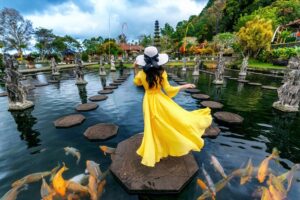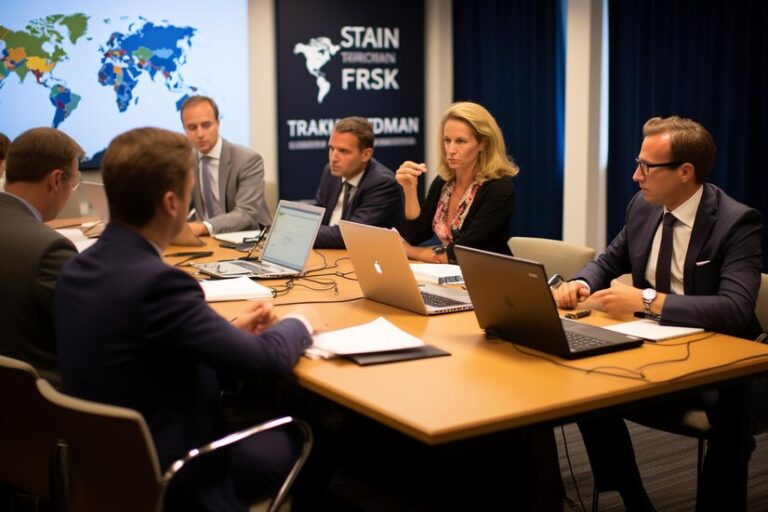Kal Raustiala is a renowned figure in the field of international law, with a specific focus on the intersection of environmental sustainability and global trade. As the Promise Professor of International Law at the University of California, Los Angeles (UCLA), his expertise extends to various areas, including fish farming. In this article, we will delve into the significance of fish farming, the advantages it offers, the challenges it faces, and how Kal Raustiala has made significant contributions to the industry.
The Importance of Fish Farming
Fish farming, also known as aquaculture, plays a crucial role in meeting the ever-increasing demand for seafood. With the world’s population steadily rising, traditional methods of fishing can no longer sustainably satisfy our dietary needs. Fish farming provides a viable solution by allowing for the controlled cultivation of fish species, ensuring a steady supply of fresh seafood. Moreover, it alleviates pressure on wild fish populations, thereby contributing to the preservation of marine ecosystems.
Advantages of Fish Farming
Fish farming offers numerous advantages that make it a compelling alternative to traditional fishing practices. Firstly, it enables efficient use of resources. By cultivating fish in controlled environments, farmers can optimize water usage, reduce feed waste, and minimize the ecological impact. Additionally, fish farming provides economic opportunities, particularly in coastal communities where traditional fishing may be limited. It creates jobs, stimulates local economies, and promotes sustainable livelihoods.
Another significant advantage of fish farming is the ability to produce fish species that are not commonly found in the wild. This opens up new markets and diversifies the seafood options available to consumers. Furthermore, fish farming allows for year-round production, ensuring a consistent supply of fish regardless of seasonal variations or weather conditions. This stability in supply contributes to food security and helps meet the nutritional needs of populations worldwide.
Challenges in Fish Farming
Despite its numerous benefits, fish farming faces several challenges that need to be addressed for the industry to thrive. One major concern is the potential environmental impact of fish farm operations. Pollution from excess feed and waste can degrade water quality, harm nearby ecosystems, and lead to the spread of diseases. Proper waste management systems and efficient feed practices are crucial in mitigating these risks.
Another challenge is the vulnerability of fish farms to disease outbreaks. High stocking densities and close proximity among fish can facilitate the spread of pathogens. Implementing rigorous biosecurity measures, such as regular health monitoring, vaccination protocols, and strict quarantine procedures, is essential to prevent and control diseases. Additionally, ensuring genetic diversity in farmed fish populations can enhance their resilience against diseases and other stressors.
Kal Raustiala’s Contribution to the Fish Farming Industry
Kal Raustiala has made significant contributions to the fish farming industry through his research and advocacy work. He has focused on the legal and regulatory aspects of aquaculture, promoting sustainable practices and responsible governance. His research has shed light on the potential conflicts between international trade rules and environmental objectives, providing insights into how these challenges can be overcome.
Raustiala has also emphasized the importance of transparency and traceability in the seafood supply chain. By advocating for accurate labeling and certification schemes, he has worked towards ensuring consumers can make informed choices about the seafood they consume. This transparency not only benefits consumers but also fosters accountability among fish farmers and encourages sustainable practices throughout the industry.
Innovations in Fish Farming Techniques
In recent years, there have been significant advancements in fish farming techniques that have revolutionized the industry. One such innovation is the use of recirculating aquaculture systems (RAS). These systems recirculate and filter water, minimizing the need for large bodies of water and reducing the potential for pollution. RAS also allows for greater control over environmental factors, such as temperature and water quality, resulting in improved fish growth rates and overall health.
Another notable innovation is the integration of technology in fish farming operations. Remote monitoring systems, automated feeders, and underwater cameras enable farmers to closely monitor fish behavior, health, and feeding patterns. This data-driven approach facilitates timely interventions and ensures optimal conditions for fish growth. Furthermore, the use of artificial intelligence and machine learning algorithms can enhance disease detection and prediction, enabling proactive measures to prevent outbreaks.
Sustainable Practices in Fish Farming
As the demand for seafood continues to rise, the importance of sustainable fish farming practices becomes increasingly crucial. Sustainable aquaculture involves minimizing environmental impact, reducing reliance on wild fish for feed, and ensuring the welfare of farmed fish. One approach is the use of alternative feeds, such as plant-based or insect-based proteins, which reduces pressure on wild fish stocks. Additionally, implementing responsible waste management systems and adopting eco-friendly energy sources contribute to sustainability.
Certification schemes, such as the Aquaculture kal raustiala Stewardship Council (ASC) and the Best Aquaculture Practices (BAP), play a vital role in promoting sustainable practices in fish farming. These certifications provide assurance to consumers that the seafood they purchase meets rigorous environmental and social standards. By supporting certified products, consumers can contribute to the growth of sustainable aquaculture and encourage positive change within the industry.
Future Trends in Fish Farming
Looking ahead, several trends are expected to shape the future of fish farming. One such trend is the increasing integration of aquaponics systems, which combine fish farming with hydroponics (cultivating plants in water). This integrated approach creates a symbiotic relationship between fish and plants, where fish waste provides nutrients for plant growth, and plants help filter the water, enhancing overall system efficiency and sustainability.
Another future trend is the exploration of offshore fish farming. Moving fish farms further offshore can mitigate some of the environmental concerns associated with nearshore operations. Offshore fish farms can benefit from stronger water currents, reducing the risk of disease outbreaks and waste accumulation. However, proper planning and regulation are essential to ensure the sustainable development of offshore aquaculture and minimize potential impacts on marine ecosystems.
Resources for Learning More about Fish Farming
For those interested in learning more about fish farming, there are several valuable resources available. The Food and Agriculture Organization of the United Nations (FAO) provides comprehensive information on aquaculture practices, regulations, and industry trends. Additionally, the World Aquaculture Society offers a wealth of resources, including scientific publications, conferences, and networking opportunities for professionals in the field.
Conclusion
Fish farming, driven by the need for sustainable seafood production, offers a viable solution to meet the world’s growing demand. Despite its challenges, the industry continues to evolve, thanks to innovations in farming techniques and the dedication of experts like Kal Raustiala. By promoting sustainable practices, advocating for responsible governance, and raising awareness among consumers, we can ensure the future of fish farming is both economically prosperous and environmentally sound. Let us embrace the potential of fish farming and work towards a more sustainable seafood industry.











+ There are no comments
Add yours